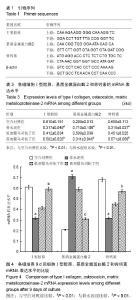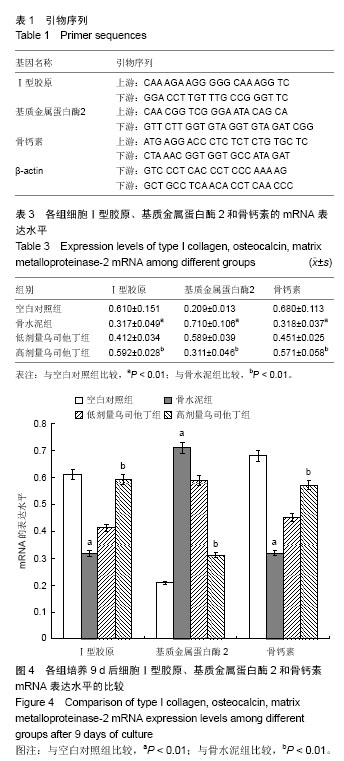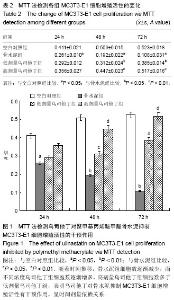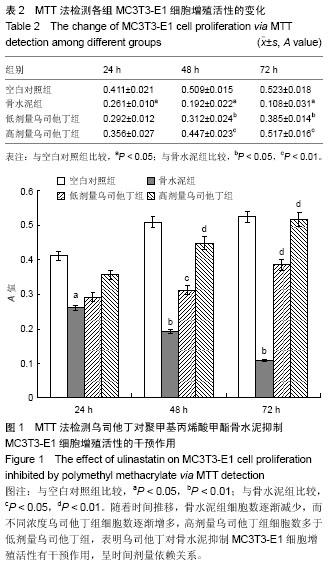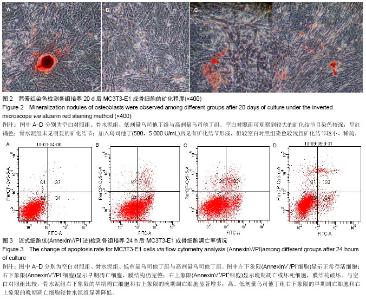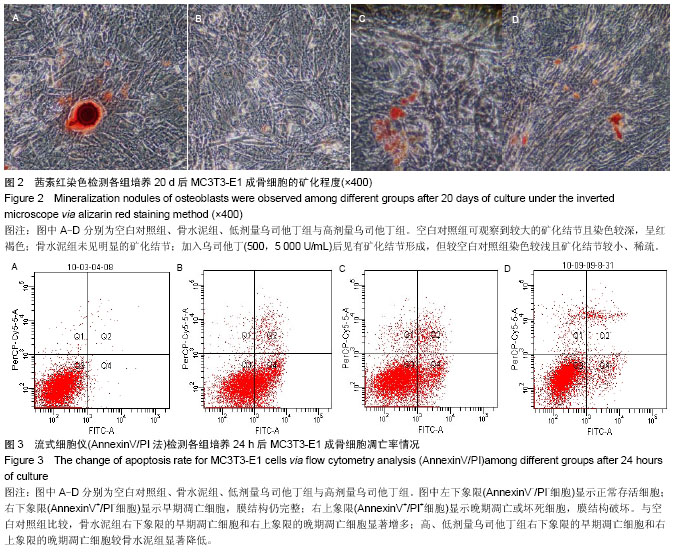| [1] Herberts P,Malchau H.Long-term registration has improved the quality of hip replacement:a review of the Swedish THR Register comparing 160,000 case.Acta Orthop Scand. 2000; 71(2):111-121.
[2] Gallo J,Kaminek P,Ticha V,et al.Particle disease. A comprehensive theory of periprosthetic osteolysis: a review. Biomed Pap Med Fac Univ Palacky Olomouc Czech Repub. 2002;146(2):21-28.
[3] Gallo J,Goodman SB,Konttinen YT,et al.Particle disease: biologic mechanisms of periprosthetic osteolysis in total hip arthroplasty.Innate Immun.2013;19(2):213-224.
[4] Stea S,Visentin M,Granchi D,et al.Apoptosis in peri-implant tissue.Biomaterials.2000;21(13):1393-1398.
[5] MacQuarrie RA,Fang Chen Y,Coles C, et al. Wear-partical- induced oeteoclast osteolysis:the role of particulates and mechanical strain. J Biomed Mater Res B Appl Biomater. 2004;69(1):104-112.
[6] Zambonin G,Colucci S,Cantatore F,et al.Response of human osteoblasts to polymetacrylate in vitro.Calcif Tissue Int. 1998; 62(4):362-365.
[7] Gough JE,Downes S.Osteoblast cell death on metacrylate polymers involves apoptosis.J Biomed Mater Res. 2001;57(4): 497-505.
[8] Schulze C,Lochner K,Jonitz A,et al.Cell viability,collagen synthesis and cytokine expression in human osteoblasts following incubation with generated wear paticles using different bone cements.Int J Mol Med.2013;32(1):227-234.
[9] Cao ZL,Okazaki Y,Naito K,et al.Ulinastatin attenuates reperfusion injury in isolated blood-perfused rabbit heart.Ann Thorac Surg.2000;69(4):1121-1126.
[10] Kobayashi H,Shinohara H,Gotoh J,et al.Anti-metastatic therapy by urinary trypsin inhibitor in combination with an anti-cancer agent.Br J Cancer.1995;72(5):1131-1137.
[11] Yoshioka I,Tsuchiya Y,Aozuka Y,et al.Urinary trypsin inhibitor suppresses surgical stress-facilitated lung metastasis of murine colon26-L5 carcinoma cells. Anticancer Res. 2005; 25(2A):815-820.
[12] Kobayashi H,Shinohara H,Takeuchi K,et al.Inhibition of the soluble and the tumor cell receptor-bound plasmin by urinary trypsin inhibitor and subsequent effects on tumor cell invasion and metastasis.Cancer Res.1994;54(3):844-849.
[13] Takubo T,Kumura T,Nakamae H,et al.Urinary trypsin inhibitor levels in the urine of patients with haematological malignancies. Haematologia (Budap).2001;31(3):267-272.
[14] Wu YJ,Ling Q,Zhou XH,et al.Urinary trypsin inhibitor attenuates Heptic ischemia-reperfusion injury by reducing nuclear factor-kappa B activation.Hepatobiliary Pancreat Dis Int.2009;8(1):53-58.
[15] Inoue K,Takano H,Yanagisawa R,et al.Protective effects of urinary trypsin inhibitor on systemic inflammatory response induced by lipopolysaccharide.J Clin Biochem Nutr. 2008; 43(3):139-142.
[16] Inoue K,Takano H.Urinary trypsin inhibitor as a therapeutic option for endotoxin related inflammatory disorders.Expert Opin Investig Drugs.2010;19(4):513-520.
[17] Umeki S,Tsukiyama K,Okimoto N,et al. Urinastatin (Kunitz-type proteinase inhibitor) reducing cisplatin nephrotoxicity.Am J Med Sci.1989;298(4):221-226.
[18] Ishigami M,Eguchi M,Yabuki S.Beneficial effects of the urinary trypsin inhibitor urinastatin on renal insults induced by gentamicin and mercuric chloride (HgCl2) poisoning. Nephron. 1991;58(3):300-305.
[19] Kobayashi H,Ohi H,Terao T.Prevention by urinastatin of cis-diamminedichloroplatinum-induced nephrotoxicity in rabbits: comparison of urinary enzyme excretions and morphological alterations by electron microscopy.Asia Oceania J Obstet Gynaecol.1991;17(3):277-288.
[20] Yamasaki F,Ishibashi M,Nakakuki M,et al.Protective action of ulinastatin against cisplatin nephrotoxicity in mice and its effect on the lysosomal fragility.Nephron.1996;74(1):158-167.
[21] Ishibashi M,Yamasaki F,Nakakuki M,et al. Cytoprotective effect of ulinastatinon LLC-PK1 cells treated withantimycin A, gentamicin, and cisplatin.Nephron.1997;76(3):300-306.
[22] Inoue K,Takano H.Urinary trypsin inhibitor as a therapeutic option for endotoxinrelated inflammatory disorders.Expert Opin Investig Drugs.2010;19(4):513-520.
[23] Hua G,Haiping Z,Baorong H,et al.Effect of Ulinastatin on the Expression of iNOS, MMP-2, and MMP-3 in degenerated nucleus pulposus cells of rabbits.Connect Tissue Res. 2013; 54(1):29-33.
[24] 葛叶盈,徐云,成建庆,等.乌司他丁对老年髋关节置换患者术后并发症影响的病例对照研究[J].中国骨伤,2011,24(6):459-462.
[25] Lee JY,Lee JY,Chon JY,et al.The effect of ulinastatin on hemostasis in major orthopedic surgery.Korean J Anesthesiol. 2010;58(1):25-30.
[26] Bei K,Du Z,Xiong Y,et al.BMP7 can promote osteogenic differentiation of human periosteal cells in vitro.Mol Biol Rep. 2012;39(9):8845-8851.
[27] Komori T.Regulation of osteoblast differentiation by transcription factors. J Cell Biochem.2006;99(5):1233-1239.
[28] Krane SM,Inada M.Matrix metalloproteinases and bone.Bone. 2008;43(1):7-18.
[29] Chen D,Zhang X,Guo Y,et al.MMP-9 inhibition suppresses wear debris-induced inflammatory osteolysis through downregulation of RANK/RANKL in a murine osteolysis model.Int J Mol Med.2012;30(6):1417-1423.
[30] Mosig RA, Martignetti JA.Loss of MMP-2 in murine osteoblasts upregulates osteopontin and bone siaioprotein expression in a circuit regulating bone homeostasis.Dis Mod Mech.2013;6(2):397-403.
[31] Franco GC,Kajiya M,Nakanishi T,et al.Inhibition of matrix metalloproteinase-9 activity by doxycycline ameliorates RANK ligand-induced osteoclast differentiation in vitro and in vivo.Exp Cell Res.2011;317(10):1454-1464. |
